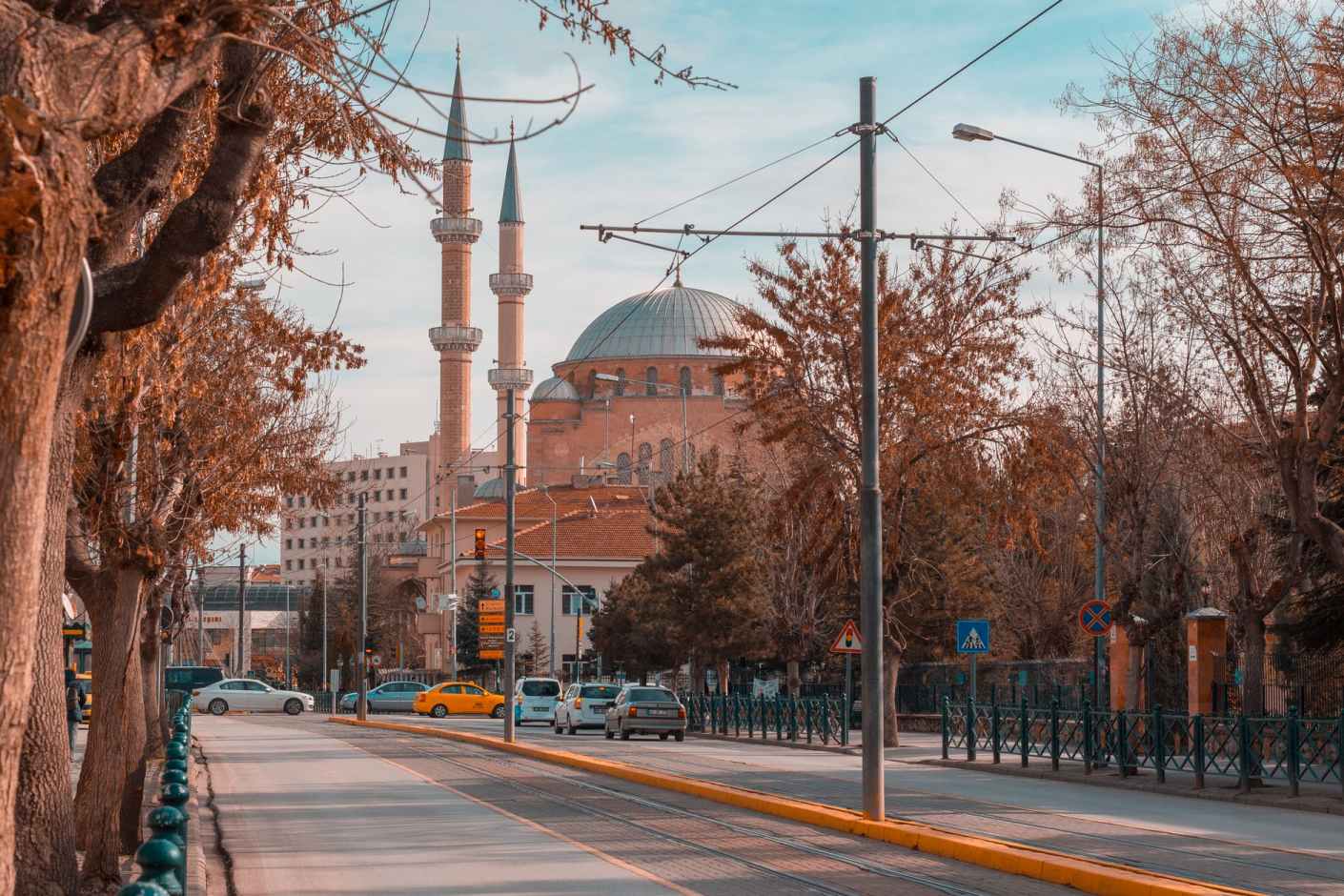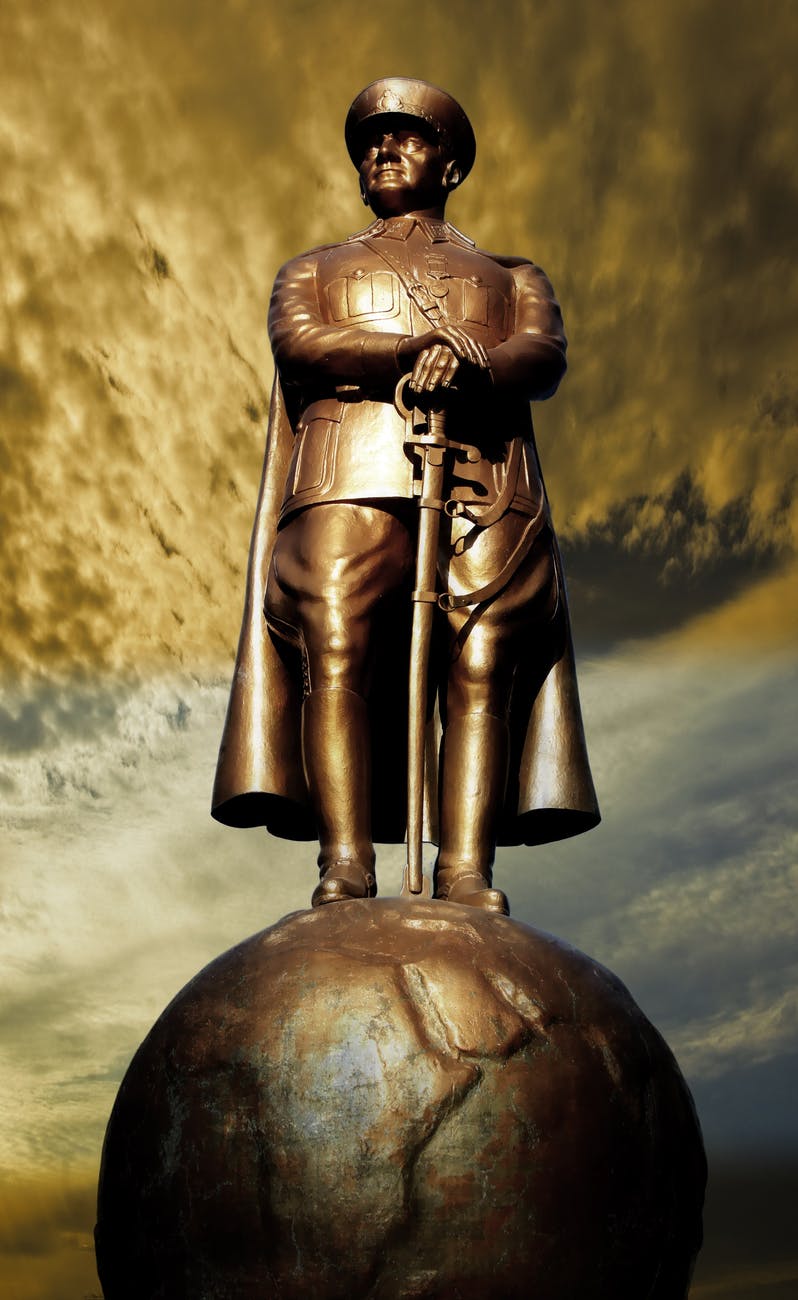Clare McCullough
What is now the Republic of Turkey was once a great empire and is unique in that it is transcontinental. During the time of Sultan-caliphs the only source of law was the revelation of God. (Time 1960) Society was broken up into three categories, the lower class, Reaya which was the mass of the population, and the two ruling elite categories, the Askeri, which was the military, and the Ulema, which was made up of religious scholars responsible for moral order. According to Zurcher, “by 1800 the governmental system could still be characterized as a ‘patrimonial’ extension of sultan’s own household.” The main task of the Sultan was to defend the Islamic community against the outside world. The Ottoman empire was mostly concerned with security and maintenance of law and order and controlled coinage and other public works. Equality before the law was something that wasn’t a part of Ottoman culture, which was a mostly agrarian economy (Zurcher). Democratization in Turkey has always been a goal out of reach for a country stuck in the cyclical methods of modern coups and revolutions.
 At the start of the 1800’s, Sultan Selim III launched a series of reforms named Nizam-i Cedid (New Order), which was aimed to increase the strength of the central state organization to combat external and internal enemies. In 1807 the Ottoman Empire’s government was changed by a coup d’etat led by a coalition of conservative ulema and janissary officers (servants of the sultan). After the coup, which weakened the Ottoman Empire’s military, they started to lose territories as it was incorporated into the European economic system.
At the start of the 1800’s, Sultan Selim III launched a series of reforms named Nizam-i Cedid (New Order), which was aimed to increase the strength of the central state organization to combat external and internal enemies. In 1807 the Ottoman Empire’s government was changed by a coup d’etat led by a coalition of conservative ulema and janissary officers (servants of the sultan). After the coup, which weakened the Ottoman Empire’s military, they started to lose territories as it was incorporated into the European economic system.
During 1839-1871 a period called Tanzimati Hayriye (beneficial reforms) radically altered the structure of the Ottoman Empire. A supreme court for judicial regulations was created and helped carry power from the palace to the Porte (bureaucracy). During the Crimean war, the Caliphs expanded and modernized the army. The Tanzimati period brought tax reform, bureaucratic specialization, limited secularization and an effort to bring equal treatment of people before the law. However, with these reforms, a movement called the young ottomans pressured for democratization, leading to unrest during and after a famine where taxes were increased on the Reaya. Following the reforms, The Ottoman empire went to war with Russia and lost territory in the Treaty of Berlin (1878).
The push for democratization was too little too late, even after the establishment of an Ottoman parliament in 1876 due to rising nationalism among the Armenians, Kurds, and the Young Turk movement. (Zurcher) This was described as the first constitutional period which spanned from 1878-1909 (Cook 2010).
The Second Constitutional Period was during 1908-1918, the result of a Unionist movement, The Committee of Union and Progress, or the CUP, experiencing a counter revolution shortly after taking power. The CUP’s political crackdown led to a large-scale insurrection in Albania. Soon after the Balkan war, the Ottoman’s losses from internal and external forces led to the Empire losing nearly all of its European territories, a total four million inhabitants. In 1913, there was further consolidation of unionist power, what Zurcher referred to as the ‘triumverate’ of General Enver, Cemal, and Talat. World War One brought many of the divisions to light, especially in the case of the Armenian deportation phenomenon that resulted in an enormous number of deaths.
There were three points that are often disputed around the deportation of the Christian minority. First in question was the military necessity of the operation in relation to WWI. Secondly disputed was the number of deaths, estimated to be from 200,000 to 800,000, leaving a wide margin of error. Another issue to address is the question of whether the intent was to commit genocide. (Zurcher). Democratization might not have benefited non-turks, but under the CUP, women had a greater amount of liberties and the Unionists approached economics from a classically liberal lens, taking steps to modernize and bring the Ottoman Empire closer to the West.
From 1921-1922 an independence war occurred that led to the National pact and subsequent one-party state, declaring Turkey a republic. It was just the beginning of major conflicts between military secularism and Islam. (Cook 2010) The newly established parliament abolished the caliphate and all members of the Ottoman era were replaced, along its old constitution from 1876. In 1921 the Law on Fundamental Organization gave power to the nationalists, served as a rudimentary institutional base, and identified the Grand National Assembly as the sole representative of the people (Cook 2010). During this time of flux the nationalists were split between the Progressive Republic Party and the eventual victor, the Republican People’s Party. This party was led by a man called Mustafa Kemal Pasha who was to change the face of the Republic of Turkey after its founding in 1923. (Cook 2010)
The Kemalist One-party state stretched from 1925-1945. Starting with the promulgation of the Law on the Maintenance of Order, Turkey became an authoritarian one-party regime and dictatorship under the guise of a republic lead by its Great National Assembly. Secularism and nationalism had been the distinctive characteristics of the Young Turk ideology since 1913. Populist themes of national solidarity put the nation’s needs before those of any one group or class. Kemal Ataturk established a new alphabet and made the use of last names commonplace; he radically secularized the state, education, and law along with all aspects of social life. There was a notable absence of check and balances in the 1924 constitution (Cook 2010). When Ataturk died from cirrhosis of the liver in 1938, his college Ismet Inonu became the national leader. During this time, the government of Turkey closely resembled the Italian fascist regime.
A transition to stronger democratization occurred in 1945-1950. After WII, general elections were held and it was the Democratic Party versus the RPP. The Rule of the DP and its president Bayar lasted for a decade. With the end of Inonu’s administration, Celal Bayer was now the president of the republic, with prime minister Menderes. During this time, there was a relaxation of secularist policies that made Islam more prominent (Zurcher). Military regimes presided over the multi-party democracy period of 1950-1986 (Carkoglu 1994)
The second Turkish republic began in 1960 after the first military takeover of the newly democratic system headed by the DP. Power was now in the hands of the National Unity Committee. A national security council was established, providing a much more liberal constitution, allowing for a multiparty electoral system to be institutionalized. (Cook 2010) With this wave of democratization, the Islamic Justice Party won the election in 1965.
In 1971, there was another interruption of democracy by the Turkish military (Carkoglu 1994). There were a series of coalition governments between 1973-1980 which were weak and experienced heavy deadlock, especially with political violence becoming a bigger and bigger issue. The end of the second republic was due to “increasing law and order problems, Kurdish separatism, and a political system in deadlock and an economy in tatters” (Zurcher). There was a crackdown on democratization using the newly reformed Penal code which complemented the constitutional and legal restrictions on political parties (Cook).
Yet another military coup began the third republic in 1980, orchestrated by General Kenan Evren, nullifying the 1961 constitution. The generals saw themselves as saving democracy as they made short work of suppressing terrorism. The new constitution concentrated power in the hands of the Executive and increased power of the National Security Council. They limited the freedoms of the press, trade unions and the general rights and liberties of the individual while at the same time making voting compulsory. During this time there were three parties allowed by the military, the Party of Nationalist Democracy which was supported by the generals, the Populist party which was supported by the traditional Kemalists, and the Motherland Party, a group that promised economic reforms. The Motherland party won the election. In 1993, the MP’s leader Turgut Ozal died, and two years later, the Islamist Welfare Party takes control. In response to the conflicts between Islamist and secular philosophy, 1997 saw another attempt at a coup’detet which was an effort at Kemalist restoration.
In 2002, the Islamist based Adalet vs Kalkinma (Justice and Development Party AKP) has an absolute majority in Turkey’s parliament. It’s been nothing but turbulence for the Turkish people, in 2016, another coup attempt by the military was stalled by its people (Al Jezeera). President Recep Tayyip Erdogan blames his former colleague for the coup attempt, Fethullah Gulen, who is the leader of the Hizmet movement. The clash between secularism and Islam has a long and violent history in Turkey along with a seemingly cyclical history in regards to the military’s intervention in government.
Works Cited
Cook, Steven A. “Turkish Paradox: Islamist Political Power and the Kemalist Political Order.”Ruling But Not Governing The Military and Political Development in Egypt, Algeria, and Turkey. Baltimore: Johns Hopkins UP, 2010. 93-148. Print.
Carkoglu, Ali. “Conflict and Development in Turkey: The Problem of the Coup Trap.” Ed. Eduard A. Ziegenhagen. Political Conflict, Political Development, and Public Policy. Westport: Praeger, 1994. 69-100. Print.
Zurcher, Erik Jan. Turkey: A Modern History. 3rd ed. London: I. B. Tauris, 2004. Print.
Stewart, Desmond. Life World Library. New York: Time, 1960. Print.
Jazeera, Al. “Turkey’s Failed Coup Attempt: All You Need to Know.” Turkey News | Al Jazeera. Al Jazeera, 30 Dec. 2016. Web. 03 May 2017.
